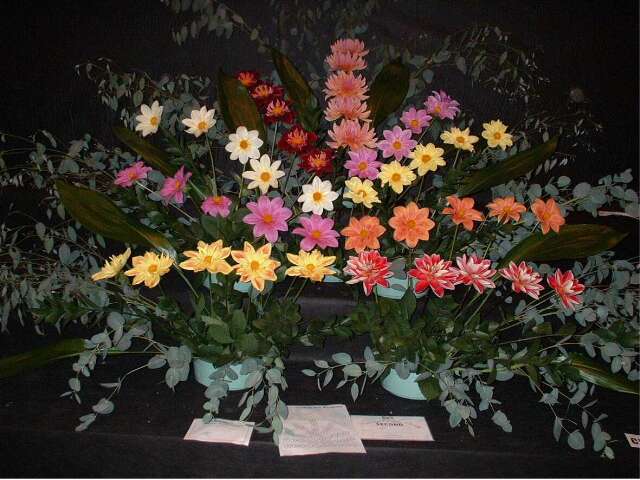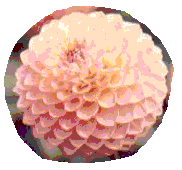 THE GROWING WORLD OF DAHLIAS
THE GROWING WORLD OF DAHLIAS
![]()
|
After moving from Bickleigh to Tiverton, I decided to concentrate on hybridising
collerettes. This was based on the premise that the yield of new varieties of
exhibition quality would be increased. Could the 1 in approximately 300 figure
for successful seedlings be improved?
My previous experience indicated that some varieties proved to be poor seed
parents. So would it be possible to find a seed parent with a significantly
enhanced yield of successful offspring? Mr. Bill Mark (NDS Patron) had intimated
to me some years ago that a certain variety that he named yielded good offspring
of both cactus and decorative form! So I concentrated for several years (1999 �
2003) in assiduously collecting seed from certain varieties and recording the
success of the seedlings on the show bench.
| By 2003 I had formulated a number of conclusions based on my
observations. However relatively little data had been collected and
pictorial records were patchy, so definitive statements cannot be made.
What was clear from the written information was that one variety � SUE
MOUNTJOY � yielded over 60% of the varieties that won at the National
Show. These included 1st, 2nd and 3rd in 2001, 2002 and 2003 in the
Seedling Class and 1st in the Championship Class for Collerettes in 2002
and 2003 (6 varieties), as well as wins in the single vase class. |
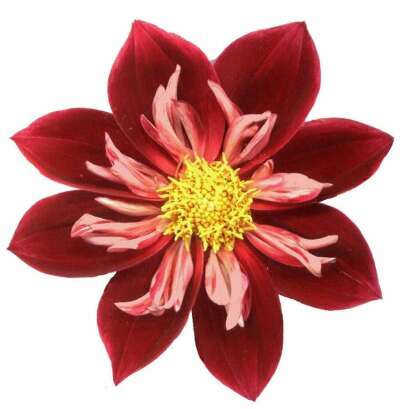 |
Another observation was that seedlings from specific varieties yielded a very
limited range of colours with quite a percentage being very like the parent.
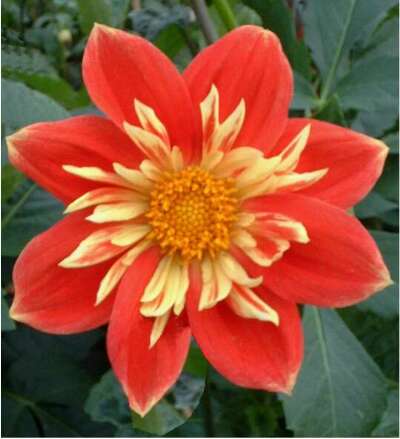 |
Two that were prominent in this respect were JANET HOWELL and
KATE MOUNTJOY. JANET is red with a yellow collar. A large majority of
the seedlings were red, yellow or a mixture of red and yellow. KATE has
a white base onto which it appears that brush strokes of purple have
been painted and has a white collar. The seedlings were invariably
white, purple or a mixture of purple and white. |
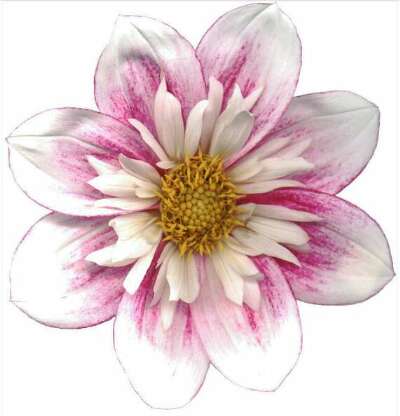 |
SUE MOUNTJOY is a deep red with the look of velvet and has a pink collar.
Seedlings cover the range of colours � white, pink, red, orange, yellow, mauve
and purple. This variety grows taller than the majority of collerettes, (6 feet)
but has tremendous stems reaching as much as 5 feet. This attribute has been
passed on to its seedlings.
Another important aspect of hybridising relates to the percentage of offspring
that are of the desired classification. In 2000 I calculated that about 8% of
the collerette seedlings were true to form. By 2003 this figure for SUE MOUNTJOY
was between 80 and 90%. This figure included all varieties with collars,
although some were not as much as the 1/3rd length compared to the main petals
as required for exhibition in the NDS Classified Directory.
I concluded that the percentage of seedlings of collerette form had increased in
direct correlation to the decrease of other classifications in my garden.
In the period 2000 to 2003 I grew approximately 300 seedlings each season, with
generally about 60 from each of five seed parents. Of these on average 25
seedlings were marked for further trial each year. In the following season
further selection resulted in eight of some, five of others and just three of
the rest being grown. The maximum number I can grow here is 215. NB. In 2004 I
nicked the patio and increased that number by 27! But will I get away with it in
2005?
The period of time from taking seed to getting named varieties in the RHS
International Register of Dahlias and in a commercial catalogue via winning a
National Championship is at least four years. So knowing that I would be 72 in
2004 I decided to do one last year of hybridising and this time grow many more
seedlings, take extensive written records, photograph every new flower, have a
serious set of objectives, do the exercise as I would have done a project when I
was a Research Chemist, reach some concrete conclusions and write up the lot for
posterity!
10 ft x 8 ft arrangement of 9 of my seedlings at The National Dahlia Society�s
Show at Shepton Mallet in 2003.
